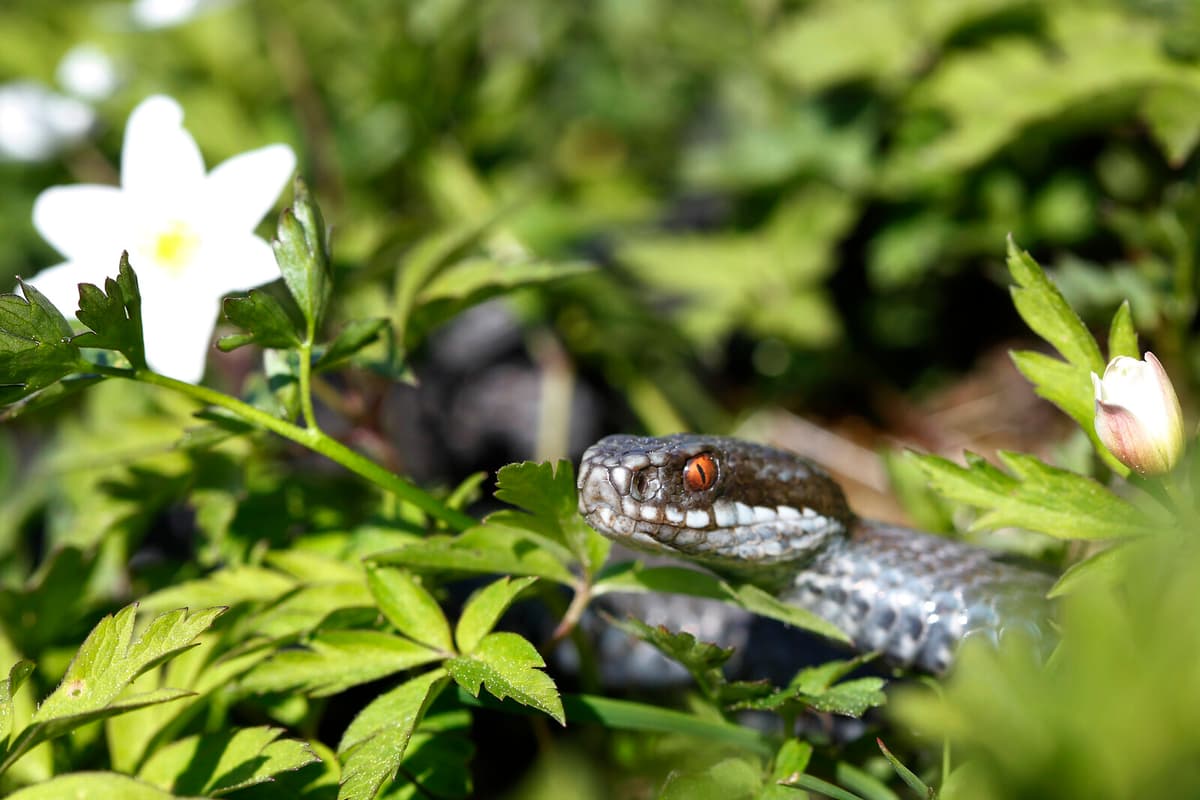Adders pose a threat in the wild to dogs – and to a certain extent, cats. According to Blekinge Läns Tidning, a veterinary clinic received seven snake-bitten animals on the same day, a sign that adders have now awakened from their winter hibernation.
Cats are not as often affected by adder bites as they are generally more cautious, but if they are, they usually do not get as sick as dogs, says Alinda Dalla-Santa.
Keep the dog on a leash
To minimize the risk of the dog encountering an adder, it is recommended to keep it on a leash in areas where adders are common. Adders seek out sunny spots such as rocky outcrops and meadows, while cold and dark environments are less appealing.
When playing with a stick or ball, one should throw backwards on the path where one has already walked, to avoid the dog running into an adder's hiding place.
Adders come to life when the sun warms up the ground. Although they are still a bit sluggish after the winter, the venom is more dangerous and more concentrated when they haven't bitten anything else yet, such as rats or mice, says Dalla-Santa.
Adders do not attack without reason, but usually bite only when they feel threatened.
They prefer to flee. A bite usually occurs when the adder is surprised and can't get away. For example, when a dog comes running at high speed or wants to sniff, says Dalla-Santa.
Seek veterinary care
Snake bites in dogs often lead to swelling and pain, and can in the worst case affect vital organs such as the liver or heart.
The swelling comes quickly and it hurts a lot for the animal. Therefore, it's good to know what your dog's normal temperature is, what their heart and breathing rate is. One should seek veterinary care as soon as one suspects a snake bite, and it's a good idea to find out where the nearest veterinary clinic or small animal clinic is if one is on vacation in another place.
If one suspects a snake bite, it's best to carry the dog, if it's not too heavy, so that the venom doesn't spread faster through the body. It's also important to remain calm to not stress the animal further.
It's common for people to panic and get stressed when they suspect that their animal has got an adder bite. Dogs react a lot to this and the stress contributes to the venom spreading. The best is to go calmly, talk normally and quickly seek care for the animal, says Alinda Dalla-Santa.
The adder, Scandinavia's only wild venomous snake, is found throughout Sweden, even north of the Arctic Circle, but not in the very farthest north and on the highest mountain peaks.
It is characterized by its zigzag pattern on its back, which is black on males and dark brown on females. The basic color is gray and brown or reddish-brown, but all-black individuals occur. The species usually grows up to 65 centimeters long, but females can be longer.
The adder thrives, among other things, in moss-covered areas, heather moors, forest edges, roadside verges, meadow and field edges, but avoids dense forests as it is dependent on places with high solar radiation.
Mild and warm springs can bring the adder out as early as February, otherwise usually in March-April.
If one is bitten by an adder, one should always seek medical care and a bitten pet should always be checked by a veterinarian.
Sources: SLU Artdatabanken and Djurens vårdguide





